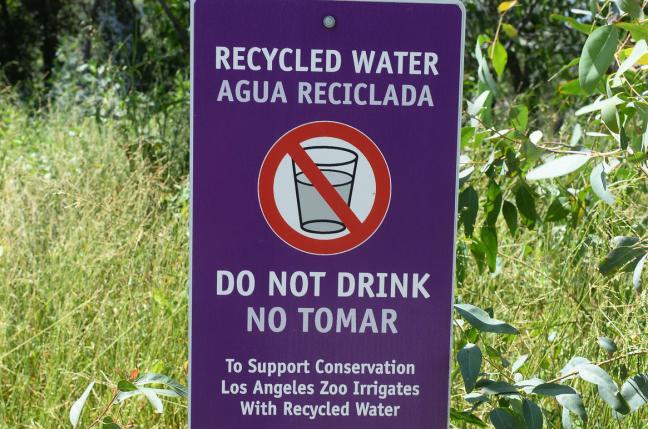
Climate Change, Wine Costs, Tap Water Taste Among Calif. Drought’s Effects

SAN FRANCISCO, April 3 (UPI) — The four-year water slump that the Golden State has not yet broken free from continues to have a tremendous impact on the 40 million people who live there. But that impact goes far beyond the precariously lean snowpack and clean water availability.
California has officially been in a drought since 2011, but a lack of water for the nation’s third-largest state is anything but rare. Nearly 40 of the last 115 years have been marred by drought in the populous state, which has presented officials with lofty challenges as to how water needs can be met.
Gov. Jerry Brown on Wednesday took the unprecedented step of mandating a cutback in his state’s water usage — a reduction he hopes will amount to 25 percent. With a snowpack estimated recently at just five percent, that is quite a challenge indeed.
But a lack of water to drink, use for agricultural purposes, or cook and clean is just part of the bad news. Experts say the dry spell has and will continue to hit California businesses and climate change activists right where they live.
“Several studies and analyses have linked the drought to a randomly occurring configuration of Pacific Ocean temperatures that encourages atmospheric winds to steer weather systems away from the Golden State,” former climate change analyst and atmospheric specialist Jason Samenow wrote Thursday in the Washington Post.
“Like steroids are suspected for inflating home run totals in Major League Baseball in the 1990s, the atmosphere’s version of steroids is a prime suspect for exploding hot weather records in California,” he noted, observing that California recorded its hottest year ever in 2014, and that the winter of 2014-15 was the warmest in state history.
Samenow made clear that climate change is almost certainly a result of California’s drought, rather than the cause of it — as is the looming threat on businesses and the economy in the state.
A case in point: The state’s famous and indispensable wine-making industry.
As State Water Project allocations remain around 30 percent, many vineyards are faced with the challenge of procuring normal levels of wine for sale with water amounts far less than normal. And the vineyards that cultivate and sell wines under $7 per bottle — California’s best-selling price point — are likely to feel the biggest pinch.
“That price segment is retracting in volume. That market and those growers may face another difficult year in 2015,” Allied Grape Growers President Nat DiBuduo said.
Wine-makers have also had to cut costs to keep the price of their products down, or risk losing customers to higher-end wines and the beer market.
“Cider is booming. Sake is booming. But these are all competitors to cheap wine,” said W. Blake Gray, the California editor of online publication Wine-Searcher.
Vineyards are insulated somewhat from regularly occurring drought because grapes are more resistant than other crops. They are able to burrow deeper into the earth’s soil until they find water, but the fruit is not invincible. Extended periods of drought, growers say, can eventually stop the grapevines from producing their yield altogether — a scenario that may take years to turn around.
“It’s not like the San Joaquin Valley will shut down overnight. But we will need a torrential downpour for a couple years in a row,” Gray said. “They aren’t going to immediately jump and recover.”
Perhaps the only ones who may benefit from the vineyards’ drought troubles are the consumers, themselves. Connoisseurs might want to snatch up the good vintages while they are available — and hold on to them.
“You want to buy them and have them for a couple of years,” Keith Wallace, founder of the Wine School of Philadelphia, said. “They may disappear someday. You want to have them before that.”
Not far away from wine country, experts say, lies yet another unpleasant consequence of the ongoing drought.
“For the past week, my tap water in Oakland has tasted like steamed onion with an aftertaste of dank mildew,” CityLab science contributor John Metcalfe wrote, noting that others in the Bay Area have likened the smell of tap water to the foul aromas emanated by chicken fat, fish tank water, and raw meat.
“In normal years, East Bay residents get their water from the cool, deep layers of the reservoir. But with the megadrought lowering lake levels everywhere in California, this year the water is coming from warmer, shallower portions … which so happen to be fine breeding grounds for microorganisms,” Metcalfe said.
Utility officials, however, have assured residents that despite its less-than-rosy smell, the water is safe to drink.
“With our dwindling water supply, there are going to be other effects of the drought,” the East Bay Municipal Utility District’s Abby Figueroa said. “This is one of them.”





